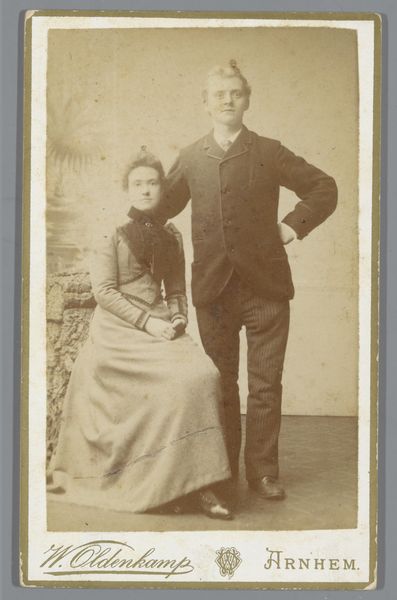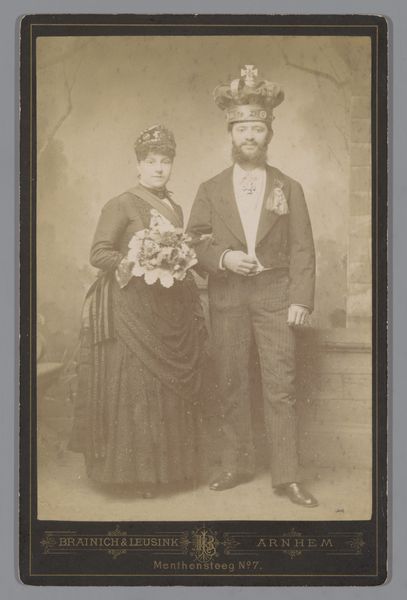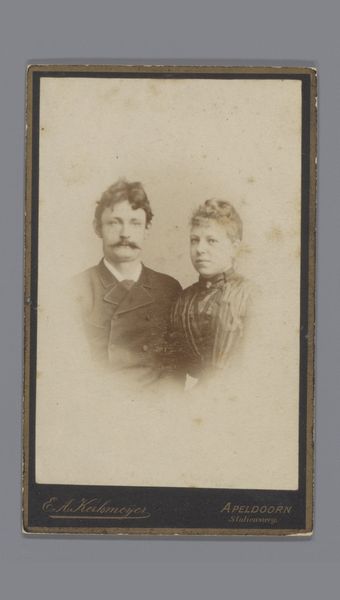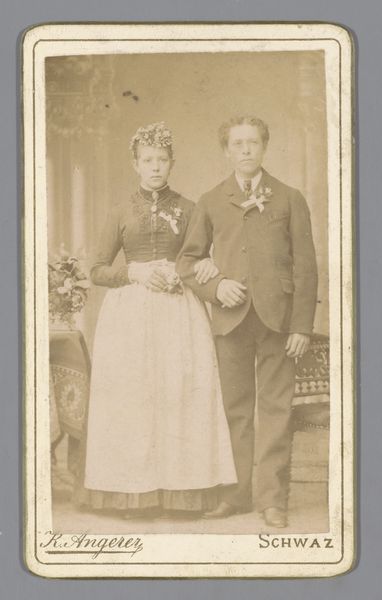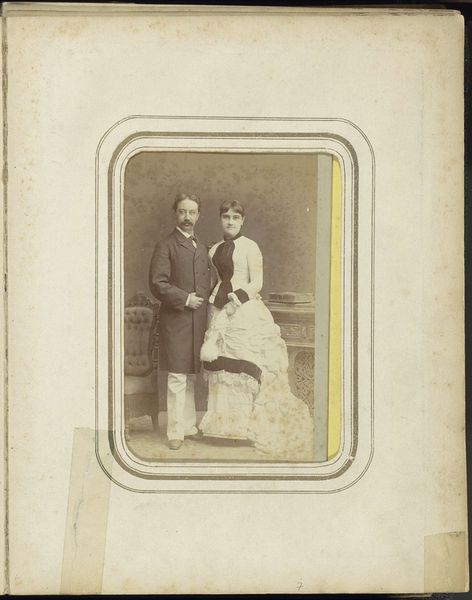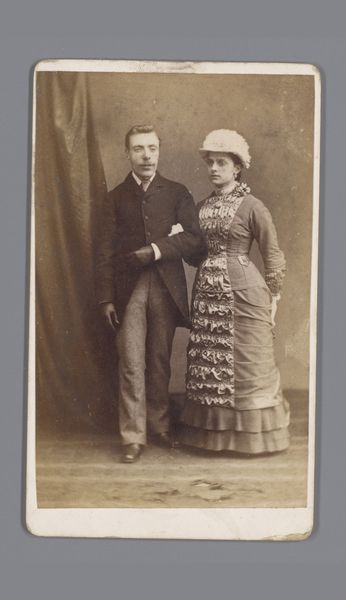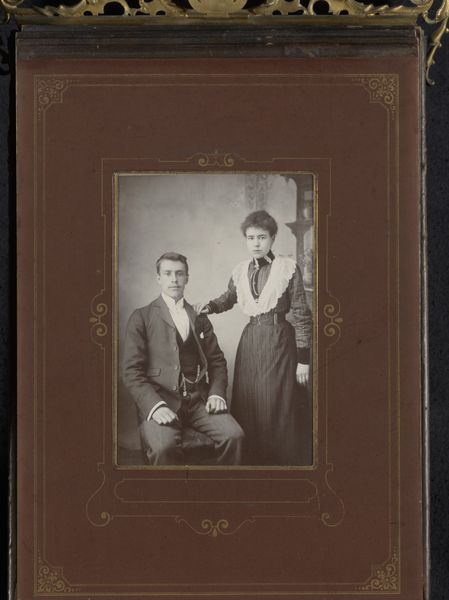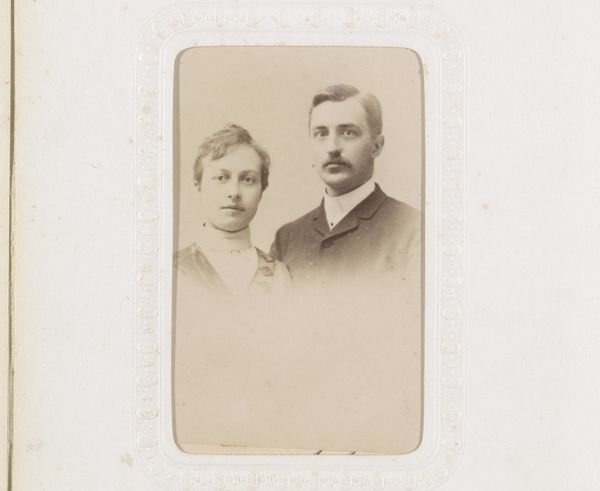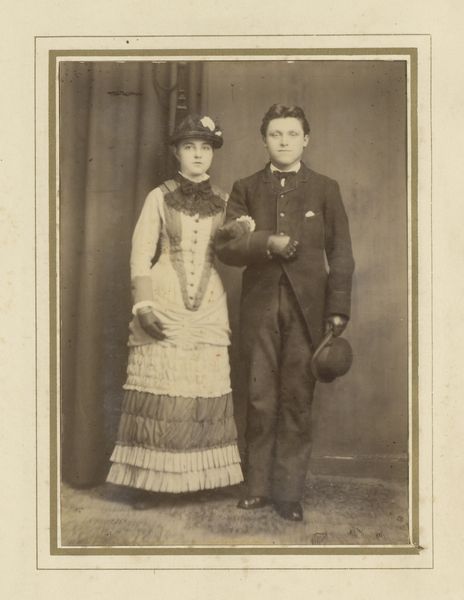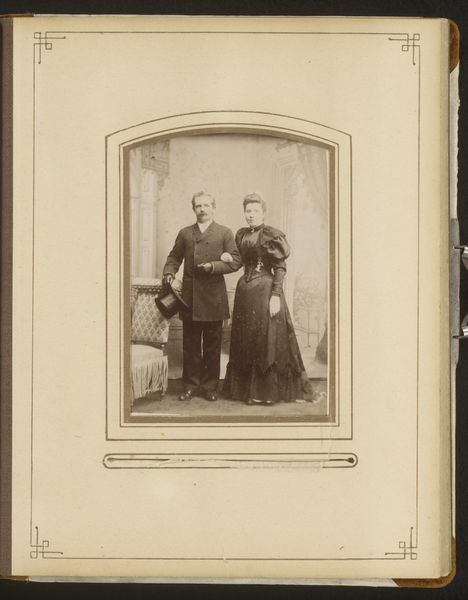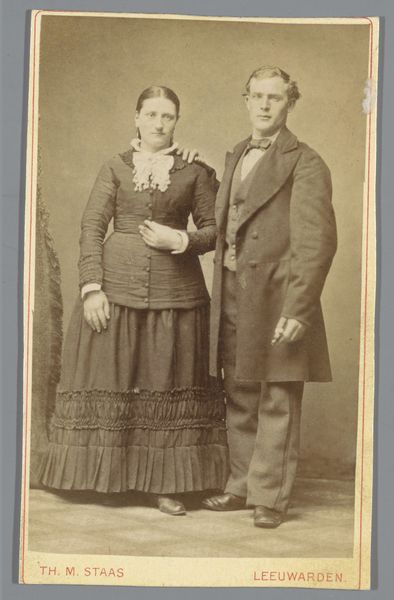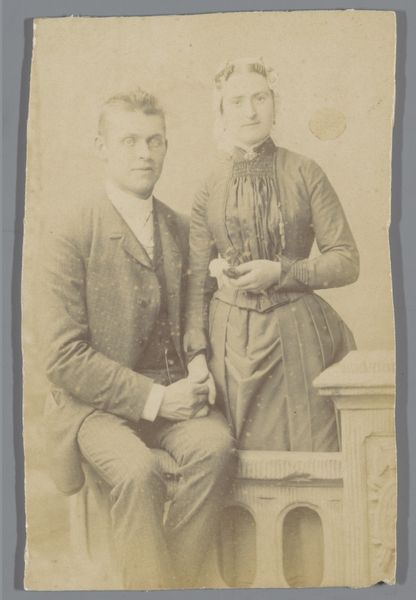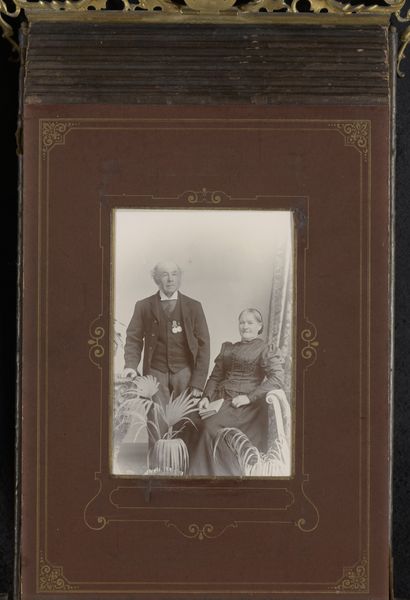
photography, gelatin-silver-print
#
portrait
#
photography
#
gelatin-silver-print
Dimensions: height 103 mm, width 64 mm
Copyright: Rijks Museum: Open Domain
Editor: This is a photograph, a gelatin-silver print made between 1874 and 1887 by Albert Greiner, titled "Portrait of an Unknown Man and Woman." There's something haunting about these anonymous portraits, almost ghostly with age. What stories do you think this image can tell us? Curator: This kind of studio portrait was common among the burgeoning middle class. Photography democratized portraiture, allowing those who couldn’t afford painting to still be visually represented and participate in visual culture. Look closely at their clothing; it signals respectability and a desire to be perceived in a certain way. Editor: So it was about more than just capturing a likeness; it was about projecting an image to the world. Did that have an impact on what art was, overall? Curator: Absolutely. It shifts our understanding of visual representation. Photography created opportunities to reproduce images, and circulate portraits widely through cabinet cards and family albums. This photograph becomes not just a personal memento but also a document reflecting evolving social norms. Editor: I see. This puts emphasis on the accessibility and consumption of images in that period, versus, perhaps, their inherent artistic merit? Curator: Yes, it allows us to think about the cultural impact of easily produced and replicated imagery, consider the societal desire to collect and create a personal historical archive. I wonder what statement the subjects were making in how they chose to present themselves? What's your read? Editor: I guess I didn't really consider that the photo *is* the message! And as we keep seeing those messages pile up over the ages, photography changes what art's role even is. Thanks! Curator: Precisely. The implications extend far beyond aesthetics, shaping visual communication in society itself.
Comments
No comments
Be the first to comment and join the conversation on the ultimate creative platform.
